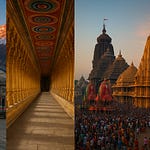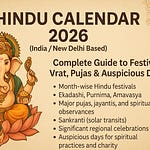Nestled deep in the serene hills of Himachal Pradesh, near Renuka Ji Lake in the Sirmaur district, lies a hidden spiritual gem known as Baba Badoliya Temple. Surrounded by lush forests, cascading waterfalls, and the whispering wind of the Shivalik ranges, this temple is a center of faith, local legend, and ancient mystique. While not widely known beyond the region, it holds immense spiritual power and reverence for devotees across Himachal.
Origin and Foundation
Local Belief and Folk Tradition
Baba Badoliya Temple is dedicated to Baba Badoliya, a revered local saint or spiritual guardian believed to have possessed divine powers. His story has been preserved through oral traditions and folk songs that have passed from generation to generation. Locals believe Baba Badoliya was a siddha yogi or ascetic who attained spiritual powers through intense meditation and penance in the surrounding forests.
Spiritual Foundation
The temple’s location was not chosen by humans, but rather divinely revealed. According to legend, the spot where the temple now stands was once a meditation site of Baba Badoliya. After his samadhi (final meditation), devotees erected a small shrine in his memory, which over time transformed into a full-fledged temple.
Architecture
Rustic Harmony with Nature
The architecture of Baba Badoliya Temple is simple yet soulful. Built using local stone and wood, the structure reflects the Pahadi style of temple construction, often seen across Himachal. It seamlessly blends with the forested landscape, appearing almost as if it grew out of the very soil.
Sanctum: Houses a black stone idol or symbolic stone representing Baba Badoliya.
Courtyard: An open-air space for community gatherings and spiritual discourse.
Waterfall & Natural Stream: A fresh-water stream and nearby Renuka Ji waterfall add a purifying touch, used for ritual baths before prayer.
Mystery and Legends
The temple is surrounded by a sense of mysticism and miracles. Local devotees tell stories of:
Miraculous Healings: Several have claimed that Baba Badoliya’s blessings cured illnesses when doctors had given up.
Protection from Evil: The temple is considered a spiritual shield for nearby villages, protecting them from natural disasters and evil forces.
Self-Lighting Flame: Older villagers believe there was once a flame that lit itself every night in the temple's sanctum during Baba's presence.
These legends continue to fuel devotion and reverence for the temple.
Puja, Rituals & Aarti
Daily Rituals
The temple follows traditional Shaiva and Nath yogic practices, with pujas performed twice daily.
Morning Puja (6:00 AM – 7:00 AM): Includes water abhishek (holy bath), incense offering, and mantra chanting.
Evening Aarti (6:30 PM – 7:30 PM): Accompanied by conch blowing, drumbeats, and collective chanting by villagers.
Special Offerings
Desi ghee diyas are offered every Monday and on Purnima (full moon).
Coconut and jaggery are common prasad items.
Bhandaras (community meals) are held every month.
Festivals and Celebrations
Annual Baba Badoliya Mela
A local mela (fair) is held once a year, where devotees, saints, and travelers gather in large numbers. Cultural dances, music, folk dramas (nukkad nataks), and spiritual discourses are held in honor of Baba Badoliya’s life and teachings.
Shivratri
As the temple holds a Shaivaite influence, Maha Shivratri is celebrated with grandeur. Devotees stay awake the whole night, chanting mantras and lighting 108 lamps.
Spiritual Significance
The temple is considered a power center (Shakti Sthal) for devotees seeking:
Mental peace
Cleansing of sins
Relief from health and family issues
Protection from evil spirits
It is also a favorable meditation site for yogis and spiritual seekers who come here to experience its vibrations and tune into deeper consciousness.
Visit and Travel Guide
How to Reach
Nearest Town: Nahan, ~35 km away
Railway Station: Ambala Cantt Junction (120 km)
Airport: Chandigarh Airport (130 km)
Local Transport: Taxis, private cars, and shared jeeps are available from Nahan or Renuka Ji.
Best Time to Visit
March to June (Spring–Early Summer)
September to November (Post-monsoon)
Avoid monsoons due to slippery roads and landslides.
Suggested Itinerary
Day 1: Arrive in Nahan, explore local market and heritage spots
Day 2: Visit Renuka Ji Lake, Renuka Temple, and Baba Badoliya Temple
Day 3: Optional trek to nearby waterfalls or forest meditation walks
Nearby Attractions
Renuka Ji Lake: The largest natural lake in Himachal, associated with the legend of Renuka Mata.
Renuka Zoo and Sanctuary: Great for nature lovers and families.
Jaitak Fort: Offers breathtaking views of the valley.
Suketi Fossil Park: Asia’s first fossil park based on life-size models.
Tips for Devotees and Travelers
Wear comfortable shoes—some walking/trekking is involved.
Carry drinking water, though temple water is considered holy and safe.
Respect local customs—remove shoes, do not litter, and observe silence during rituals.
Photography may be restricted inside the sanctum.
Baba Badoliya Temple is not just a spiritual center—it is a sanctuary of nature, culture, and inner awakening. For those who wish to go beyond the usual pilgrimage destinations and experience Himachal’s divine heritage, a visit to this sacred spot offers peace, healing, and a deeper connection to the divine.










